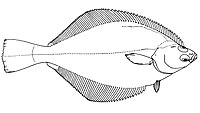
Photo from wikipedia
Abstract Abstract Earth is rapidly losing free-living species. Is the same true for parasitic species? To reveal temporal trends in biodiversity, historical data are needed, but often such data do… Click to show full abstract
Abstract Abstract Earth is rapidly losing free-living species. Is the same true for parasitic species? To reveal temporal trends in biodiversity, historical data are needed, but often such data do not exist for parasites. Here, parasite communities of the past were reconstructed by identifying parasites in fluid-preserved specimens held in natural history collections. Approximately 2500 macroparasites were counted from 109 English Sole (Parophrys vetulus) collected between 1930 and 2019 in the Salish Sea, Washington, USA. Alpha and beta diversity were measured to determine if and how diversity changed over time. Species richness of parasite infracommunities and community dispersion did not vary over time, but community composition of decadal component communities varied significantly over the study period. Community dissimilarity also varied: prior to the mid-20th century, parasites shifted in abundance in a seemingly stochastic manner and, after this time period, a canalization of community change was observed, where species' abundances began to shift in consistent directions. Further work is needed to elucidate potential drivers of these changes and to determine if these patterns are present in the parasite communities of other fishes of the Salish Sea.
Journal Title: Parasitology
Year Published: 2022
Link to full text (if available)
Share on Social Media: Sign Up to like & get
recommendations!